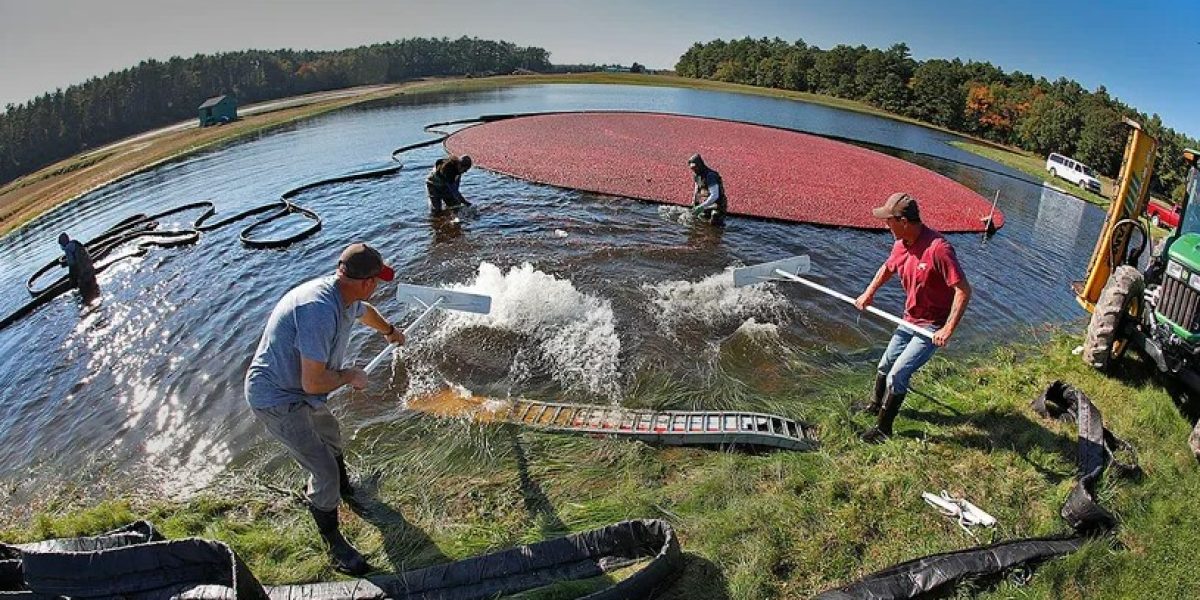
Greg Derr/The Patriot Ledger
THE PATRIOT LEDGER – From September through early November, the South Shore wears the bright reds and crimsons of the cranberry harvest.
Massachusetts Cranberries, a trade group, offers guided bus tours that satisfy the curiosity as much as the eye. Tours depart from the farm of growers Dick and Judy Ward in Carver.
This week, a group of 20 tourists from across the country assembled at the Wards’ farm. Guides Kimberly Miot and Debbie Kanady greeted tourgoers from as far away as California, Nebraska and Texas.
Before the tour departed, Massachusetts Cranberries Executive Director Brian Wick spoke with tourgoers and answered questions.
Massachusetts ranks second in the nation in cranberry production with more than 14,000 acres. Like most sectors of the economy, cranberry production faces higher costs across the board, including fuel, labor and fertilizer.

“It’s all increasing,” Wick said. “The margins were already tight.”
Pricing has also increased, but it hasn’t kept pace with rising production costs, he said. But Wick said he’s optimistic as burgeoning markets in India and China promise long-term growth for Massachusetts cranberry farmers, although trade wars initiated in 2016 continue to constrain exports to China.

As the bus rolled along the meandering streets of Carver and Wareham, bogs in various phases of the harvest – some dry, some flooded, some with the crimson berries floated and awaiting collection – came into view. As tourists gazed out the windows, Kanady, speaking into a microphone, described the yearlong process of cultivating cranberries, as well as the history of cranberry production in the region.

Native Americans, including the Wampanoag and other Algonquin tribes, harvested wild cranberries for medicinal and nutritional purposes. They mixed it into a paste of dried meat fat called pemmican for the winter. Native Americans introduced cranberries to Europeans.
The bus pulled into a flooded bog where berries had already been separated from the vine and floated, creating a brilliant crimson film across the water. As tourists walked around the bog, Miot cut into a few plump berries, exposing the four interior air pockets, which account for their buoyancy.
A team of Cambodian harvesters in chest-high waders worked strenuously to corral the berries with a boom, a kind of flexible foam chord, toward a receiving station. There, a vacuum drew up the berries to a machine that washed them and separated out debris, including frogs, and deposited them into a waiting trailer. A full trailer holds 50,000 pounds or 22 million cranberries.


Dick Ward, who is in his 80s and still farming, greeted the tourgoers when they returned from the tour.
People sampled fresh cranberries dry-picked on the 11-acre farm as he demonstrated how an old, but still operational, machine separates the good berries from the bad.
Tours depart the farm at 10 a.m. and 2 p.m. weekends through Nov. 6. For more information, visit cranberries.org.

By Peter Blandino



